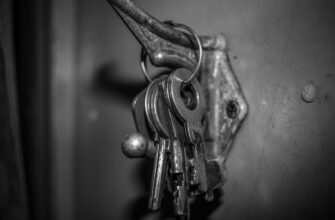🧬 Power Up with Free $RESOLV Tokens!
🌌 Step into the future of finance — claim your $RESOLV airdrop now!
🕐 You've got 30 days after signup to secure your tokens.
💸 No deposit. No cost. Just pure earning potential.
💥 Early claimers get the edge — don’t fall behind.
📡 This isn’t hype — it's your next crypto move.
What is a Private Key and Why Does Safety Matter?
A private key is a cryptographic code that grants access to your digital assets like cryptocurrency wallets or encrypted files. Think of it as a super-powered password – but unlike regular passwords, if you lose your private key, you permanently lose access to your assets. Worse, if someone else discovers it, they can steal everything instantly. For beginners, understanding how to store private keys safely isn’t just helpful; it’s non-negotiable for protecting your digital wealth.
The Grave Risks of Poor Private Key Storage
Storing private keys carelessly invites disaster:
- Irreversible theft: Hackers can drain crypto wallets in seconds
- Permanent lockout: Lost keys mean permanently inaccessible funds
- Phishing vulnerability: Screenshots or digital copies are hacker magnets
- Physical damage: Paper can burn, hardware can fail
Unlike bank accounts, crypto transactions can’t be reversed. Once assets move, they’re gone forever.
Beginner-Friendly Storage Methods Ranked by Security
Choose wisely based on your asset value:
- Hardware Wallets (Most Secure): Offline devices like Ledger or Trezor. Keys never touch internet-connected devices.
- Metal Engraving: Fire/water-proof steel plates etched with keys (e.g., Cryptosteel).
- Paper Wallets (Basic): Handwritten copies on acid-free paper, stored in sealed bags.
- Encrypted USB Drives: Password-protected offline storage (less ideal than hardware wallets).
Never store keys in: Cloud drives, email, notes apps, or unencrypted devices.
Step-by-Step: Storing Your First Private Key Safely
Follow this beginner-proof process:
- Generate offline: Use trusted software (like Electrum) on a malware-free computer disconnected from the internet.
- Write immediately: Hand-copy the key twice on archival-quality paper using permanent ink.
- Triple-check: Verify every character matches the original. One typo = permanent loss.
- Secure physically: Store copies in separate locations (e.g., home safe + bank vault). Use tamper-evident bags.
- Destroy digital traces: Wipe clipboard history and restart your device after generation.
Critical Mistakes Every Beginner Must Avoid
- ❌ Storing keys on smartphones or laptops
- ❌ Taking screenshots or photos of keys
- ❌ Sharing keys via messaging apps or email
- ❌ Using online “key recovery” services (scams)
- ❌ Storing only one copy (always have 2-3 backups)
Private Key Storage FAQ
Q: Can I store my private key in a password manager?
A: Only for very low-value assets. Password managers are online targets. For crypto, use offline methods.
Q: What if my paper wallet gets damaged?
A: This is why you need multiple backups in different locations. Store one in a fireproof safe and another with trusted family.
Q: Are hardware wallets worth the cost?
A: Absolutely if you hold over $200 in crypto. They’re the gold standard – a $60 device could save thousands.
Q: How often should I check my stored keys?
A: Verify physical copies every 6 months. Check for fading ink or corrosion. Never expose them digitally during checks.
Q: Can I memorize my private key?
A: Extremely risky. Keys are 64 complex characters – human memory fails. Use physical backups instead.
Mastering private key storage is your first line of defense in the digital world. Start with paper or metal backups, upgrade to hardware wallets as your assets grow, and remember: your vigilance is the price of true security.
🧬 Power Up with Free $RESOLV Tokens!
🌌 Step into the future of finance — claim your $RESOLV airdrop now!
🕐 You've got 30 days after signup to secure your tokens.
💸 No deposit. No cost. Just pure earning potential.
💥 Early claimers get the edge — don’t fall behind.
📡 This isn’t hype — it's your next crypto move.








